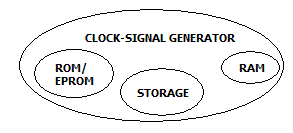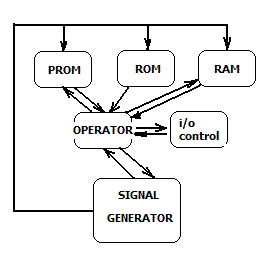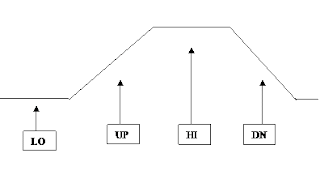Friday, December 28, 2007
Thursday, December 27, 2007
The Road Since Structure: Philosophical Essays
Thomas Kuhn's book deals with subjects that most scientists seem to neglect.
Kuhn’s treatment of paradigm shifts in the realms of Newton and
Copernicus may turn out to influence life outside of science.The
book is a compilation of his essays and an interview with him by
Aristide Baltas. Throughout the essays he tries to reconcile the
paradigm shifts with everyday science. Kuhn alerts many scientific
minds with the statement asserting that whenever science makes a
discovery, it is not always aimed at truth, but the discovery in itself
is a never-ending a paradigm shift. Almost humorously, scientists are
described as unconcerned with defining truth, defining it with error
bars.Kuhn seems to overlook the weight of work done
throughout the centuries to understand Newton’s laws, wherein he
characterizes the research by famous mathematicians and physicists, in
his words, as a limited mopping up operation.Kuhn also
claims that a scientist's socio-cultural experience influences a
paradigm shift while it is happening. This, and other exotic claims,
make the book fun and entertaining for a scientific mind.
Tuesday, December 25, 2007
The Spy Mag Nostalgia

Spy was a magazine of satirical journalism, featuring in-depth investigative journalism. Based in New York, Spy resembled the British magazine Private Eye, which intelligently researched the American media and entertainment industries, and delivered content in a humorously irreverent style.
Some of Spy's features attempted to present the darker side of celebrities such as the prophetic photograph of Kurt Cobain holding a muzzle of a rifle in his mouth, Arnold Schwarzenegger (printing a nude photo of him and a picture of his father''s Nazi party membership card), John F. Kennedy, Jr., Martha Stewart, and especially the real-estate tycoon Donald Trump and his then-wife Ivana Trump. The mogul was repeatedly described as "short-fingered vulgarian Donald Trump," and such literary, pejorative epithets became a Spy trademark.
Spy's distinctive features included "Writer's Blecch," "Separated At Birth?," which were side-by-side photographs of two different celebrities, and "Celebrity Math," which presented thumbnail headshots atop simple and imaginative mathematical models representing the components of celebrities, for example,
David Letterman + Dennis Miller = Dennis Prager.
For a humorous magazine, Spy was often aggressive about straight feature reporting. In its 1993 article entitled "Clinton's First 100 Lies,", Spy was the first to detail what it described as the new president''s duplicitous behavior. After O.J. Simpson was acquitted on charges of murdering his former wife and her friend, Spy ran a cover story under the headline "He''s Guilty, By George!" compiling a long list of details that its writers said proved conclusively that Simpson was the killer; he did not sue. Spy used a staff of attorneys to research such potentially libelous material, producing strong stories that often enraged their prominent subjects.
Despite its short life, Spy was among the most influential of American magazines, chiefly due to its consistently preserved policy of detached and ironic tone, to its use of imaginatively humorous scientific charts and tables to convey information, and its esthetically pleasing typography and layout. The magazine was also controversial: many reputable journalists considered it aggressive and flashy, whereas many younger ones felt it expressed exactly their thought.
After one shut-down and a subsequent rebirth, it closed for good in 1998.
Relevant Links: secretdatabase.blogspot.com
Published: July 17, 2007, by Myself
Tuesday, July 24, 2007
UCICS (U6) Post 2, The Languages.
COMPARISON of PC and U6 terms:
PC U6
Data Instruction mov,push,pop /,//,\,\\,
Segment Register S: CS DS ES SS @,#,$,&
Ordinary Register R: AX, BX...SP,DL {{,}},[,],<,>,>>
Computer CPU MultiDim Array machine
CPU CPU Operation Block
Clock clock Signal Generator
RAM RAM Data Block
ROM ROM Source Block
Buffer Buffer Store Block
File File Pack, Paq, Packet
Code Machine Logic
LUICS ( formerly Linguistic User Interface Command System) Logic-code Uniform Interface Command System is an U6 uniform language that incorporates the following:
AIPL – Artificial Intelligence Programming Language, Real-time adaptive, scripting, self-writing program, also used as a development tool.
ICICL – Information and Computer Interface Command Language – incorporates a network OS and netbios functions, primary interface with other network formats and brands
MACOL – Machine Access Object Language
Here is a comparison of the language codes:
Language
|
Explicit Declare
|
Implicit Declare
|
Operates:
|
LUICS
|
%
|
Nexus,script,node
|
Network,windowing,
GUI, API
|
ICICL
|
@
|
Alpha, number, opert
|
OS programming, DB&SQL, Math
|
AIPL
|
*
|
Object, subject,action
|
Modeling, simulation, gaming
|
SLATRAN
|
$
|
Image, graph, char
|
Object-network API
|
MACOL
|
#
|
Block, operon,acton
|
Programming,
object,memory,
Match,search
|
Sunday, July 22, 2007
UCICS (U6) post 2: Programming, Signal Logic.
Instead of bits, there are 2 bases of Elements.
I will gladly answer questions by e-mail.
What do you think?
The Signal Generator produces Signal Elements that are conceptually equivalent to bits, but in the elements themselves can be generated in any one of 4 or 8 possible states –referred to as the Quad and the Octo system:
The four states of the Quad system can have the following values that further comprise value methods of computing in U6:
State
|
Symbol
|
Logic value
|
Set
Value
|
Operation value
|
Condition value
|
Set
Value
|
LO
|
o||
|
Not
|
Zero
|
Null (None)
|
except
|
Zero
|
HI
|
^|
|
Yes
|
Unity
|
One
|
Include
|
Unity
|
UP
|
/|
|
Up
|
Fill
|
Set
|
True
|
Fill
|
DN
|
\|
|
Down
|
Empty
|
Reset
|
False
|
Empty
|
The signal generator can also produce this Octo state element system, the octo (octal) system:
whose values are:
Symbol
|
Symbol Value
|
Logic value
|
Set
Value
|
Operation
Value
|
Condition value
| |
LO
|
o=
|
Empty
|
Not
|
Zero
|
accept
|
Except
|
U+
|
{=
|
Common to, not shared
|
share
|
plurality
|
send
|
then
|
U0
|
/=
|
Common to, shared
|
Up
|
Unity
|
compare
|
True
|
U-
|
§=
|
Includes two or more
|
Not equal
|
only
|
exclude
|
when
|
HI
|
^=
|
Excludes
|
Yes
|
Fill
|
Set to
|
Include
|
D+
|
¶=
|
Infinity
|
equal
|
Infinity
|
Take all
|
always
|
D0
|
\=
|
Includes some
|
Down
|
Empty
|
Reset
|
False
|
D
|
}=
|
Includes any one
|
None
|
full
|
Take only
|
if
|
Thursday, July 19, 2007
Intro to the U6- UCICS-The Unified Communication, Information and Computing System
I love working in U6's. It has a fundamental functional environment with an unlimited number of parallel GUIs that incorporates in itself :
- Its memory and the processor have been integrated into one, photonic device based on optical signalling.
- Programming is based on Logic and Symbol equivalent logic code (see U6 languages below)
- An engineering shell for any number of machines invocable from any of the remote, recognized computers
- An SGML-HTML like environment for Internet interface, organically self-written - forget the XML hassles!
- A file and server Protocol Self-Writing facility
 or, in PC terms:
or, in PC terms:
 The Operators!
Forget the CPU. U6 core, if you will, is an operator made up of operators. Imagine a wheel with hub and spokes. Or better yet, the solar system. There is arrays, the central operator, which would remind you of addresses. Everything else is located (figuratively speaking) around the arrays.
The Operators!
Forget the CPU. U6 core, if you will, is an operator made up of operators. Imagine a wheel with hub and spokes. Or better yet, the solar system. There is arrays, the central operator, which would remind you of addresses. Everything else is located (figuratively speaking) around the arrays.
Array Task Manager operator has in itself a group of managers each referred to as When, What, Where, How and How Many managers. The Array Task Manager often is the most crucial component, resembling a kernel in other systems.
Array Definition and Tagging (Addressing) sets up arrays according to the needs of the operation, as well as defines the arrays' discreet dimensions, tags, remembers and searches unique location addresses within all of the arrays.
Search and Iteration set of components conducts all the array searches by any of the value methods, it defines iterations according to search operations. Search and Iteration processors (which are, again, hyper-vector) actively search, find and provide found values, or sets of values, by comparing, matching and other methods that would remind you of hash and range math.
Symbol Processor is the equivalent of a CPU processor, except that it uses all of symbols of any symbol logic it creates for an operation, and uses for operation to calculate processes.
Translators simultaneously translate between different symbol logic systems, value methods, math algorithms, thereby allowing many different machine languages, solid-state PC bit systems and their operating systems to function on a single U6 platform in perfect harmony.
Calculators calculate any math, logic or other value method functions, algorithms and formulas that require result computations and excludes process decision-making (process calculation), which is done by the symbol processor.
Comparators compare entire processes, sets, algorithms, tasks, functions and other activities simultaneously, and substantially faster than your regular Cray or other electronic machines - since sets, algorithms and activities exist as objects relative to the . Unlike the Search and Iteration operator that reaches into locations to search and find, the Comparators receive sets of activities to be compared in decision making.
Programming and Logic later. Isn't U6 cool?
Subscribe to:
Comments (Atom)

